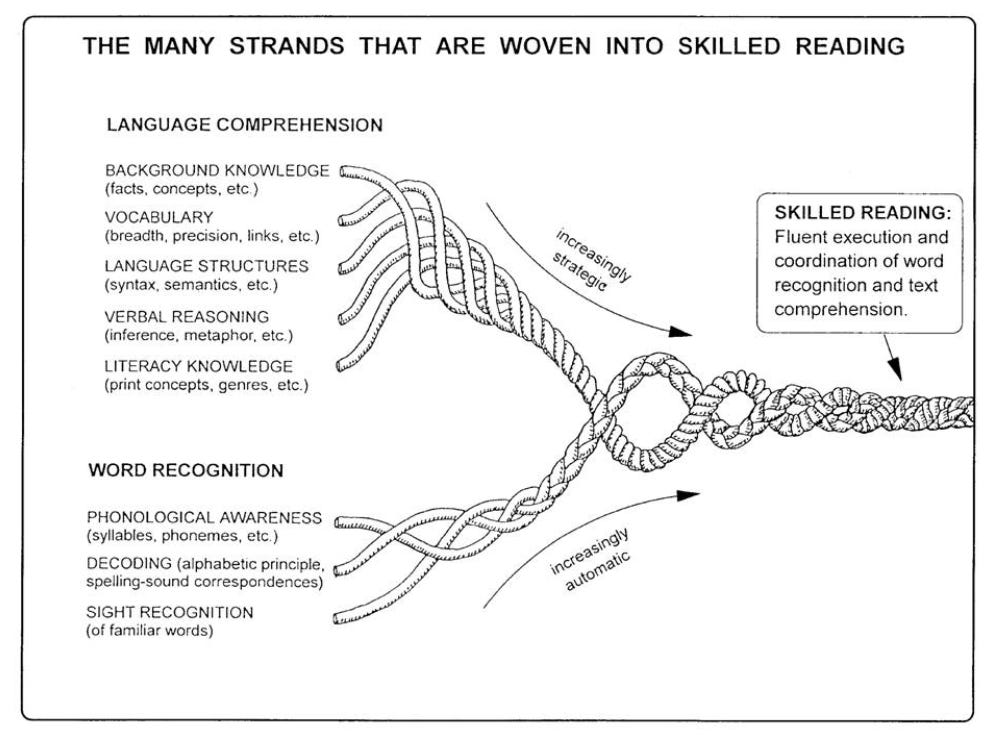Views of Reading
A few you should know
Dear Readers,
This week, we take on a few views of reading that we think are helpful to know about. We believe that when we’re able to think about what constitutes skilled reading, we can make better big picture instructional decisions (and small picture ones, too). We hope you find knowing and reading (and perhaps re-reading) about these helpful.
We like to imagine that you’ll be kicking up your feet and sipping an iced coffee (or margarita…or glass of milk…or diet soda pop) as you think about these this weekend!
Happy Saturday!
Lizzie & Marie
What makes skilled reading? Here’s a recap of a few views of reading that are important to know about.
Simple View of Reading
Much of the discourse around the science of reading has referred to the simple view of reading, developed by Gough and Tunmer in 1986.
This view of reading posits that when an individual is reading a text, reading comprehension is the product of both word recognition and language comprehension. You can’t have reading comprehension without both of these factors (that’s why there’s a multiplication sign - anything times zero is zero).
Learn more about the simple view of reading in this Reading Rockets article and video.
Scarborough’s Rope

In 2001, Scarborough, a psychologist and literacy expert, illustrated the complexities of language comprehension and word recognition by breaking them down further into strands of a rope. With these strands, she illustrates the many factors that make up language comprehension and word recognition. Word recognition becomes more automatic over time (generally during early elementary school), while language comprehension always continues to grow and become increasingly strategic (as even adults continue to grow background knowledge, vocabulary, etc.).
Here’s a nice description of the rope on the Arizona Department of Education Website.
Active View of Reading

The Active View of Reading, by Duke and Cartwright (2021), has a number of similarities to Scarborough’s rope. However, it shows that some areas of language comprehension and word recognition overlap—“Bridging Processes.” The Active View of Reading also points to the importance of the readers’ processes - “Active Self Regulation”—which include motivation, engagement, executive functioning, and strategy use.
Read more about the rationale for and breakdown of the Active View of Reading here.
So what?
Each of these models encourage us to attend to key aspects of skilled reading during instruction. They also allow us to think about our practices, the parts of our school day, and individual students.
We encourage you to reflect with these questions (and of course, let us know what you are thinking!):
When I look across my school day, year, and weeks, am I providing instruction that contributes to each of the parts of skilled reading? It’s often the case that some areas are privileged more than others. Or, to be honest, we may be doing few parts particularly well.
Does my practice and my school’s curriculum ensure that students learn and master foundational skills early on? Sometimes we are merely exposing students to foundational concepts rather than engaging in a cycle of teaching and assessment to ensure mastery.
Do I provide time throughout my school day for students to engage with rich texts so that students’ grow their language comprehension? In our experience, this piece is often missing or not as rich as possible in the early grades.
And finally...reflect for action:
What am I learning/thinking?
So… what does that mean in practice?
Now… what do I need to do/change?


Reading is complicated and deserves much reflection. Beliefs form the basis for action. What do students need to be successful? Sometimes tbe simplest answers are not in the students' best interests.
Beautiful post!